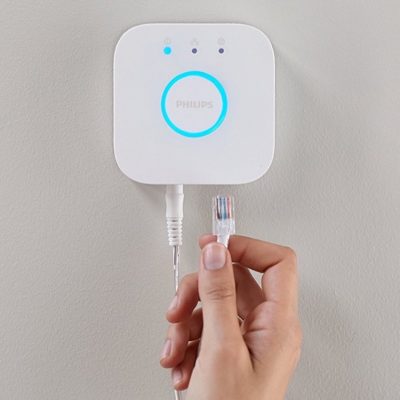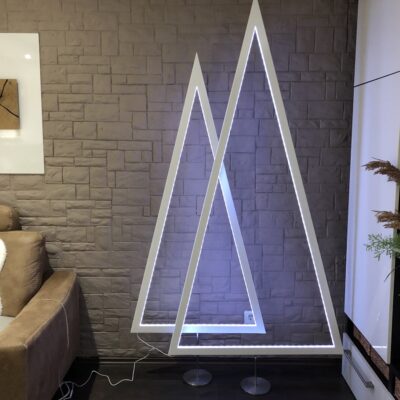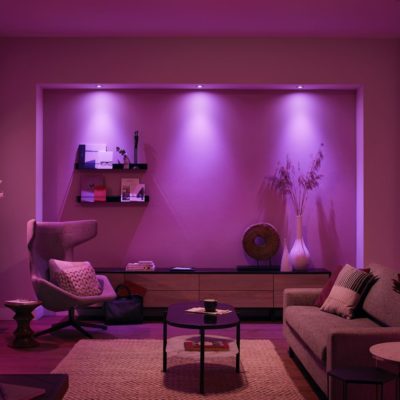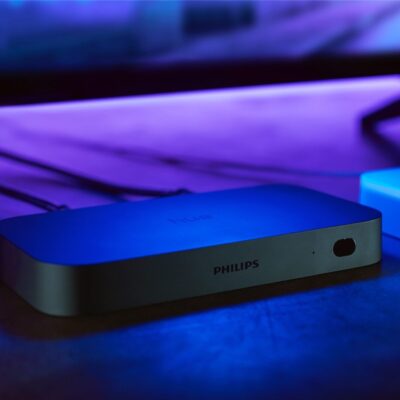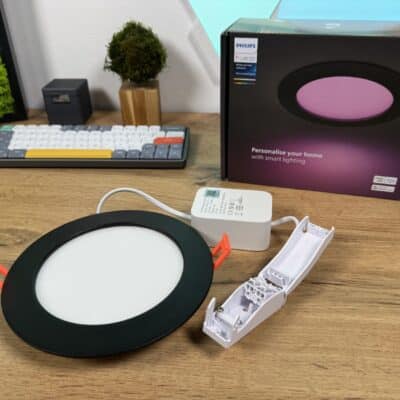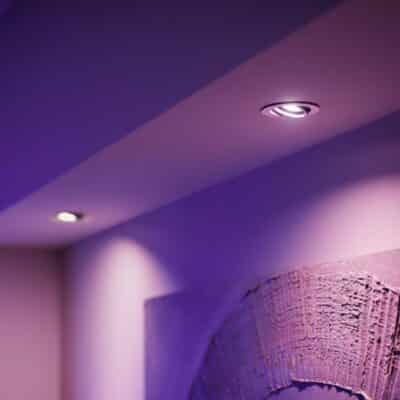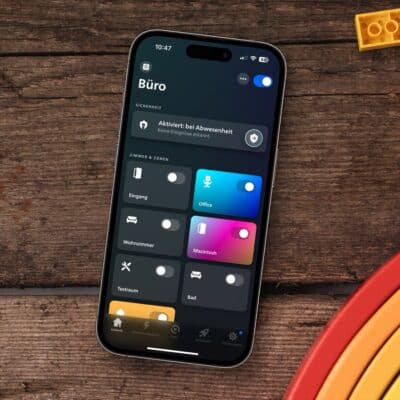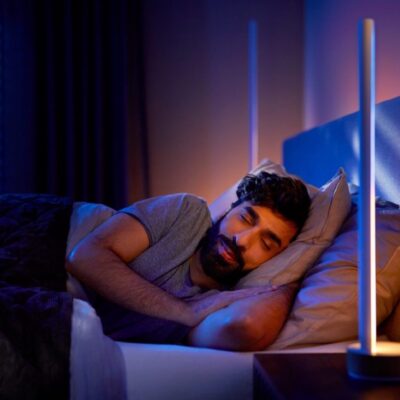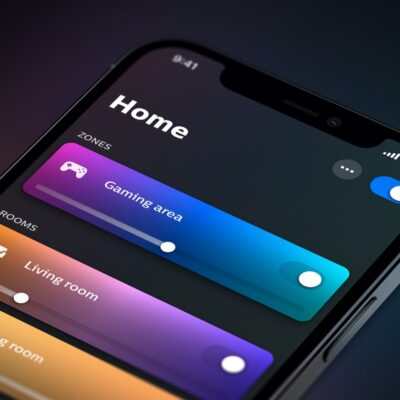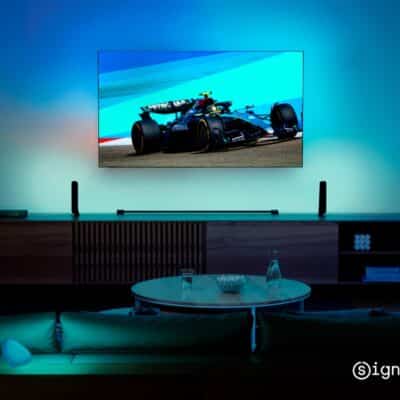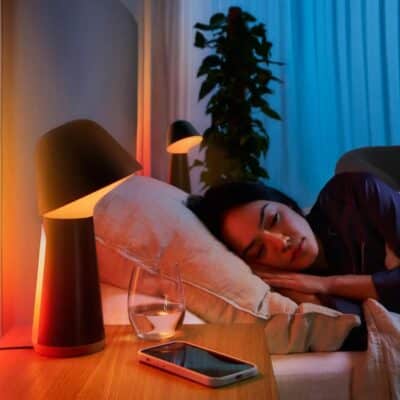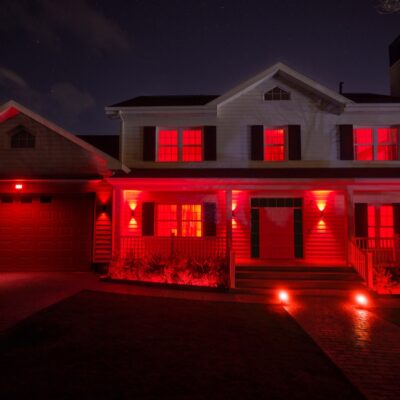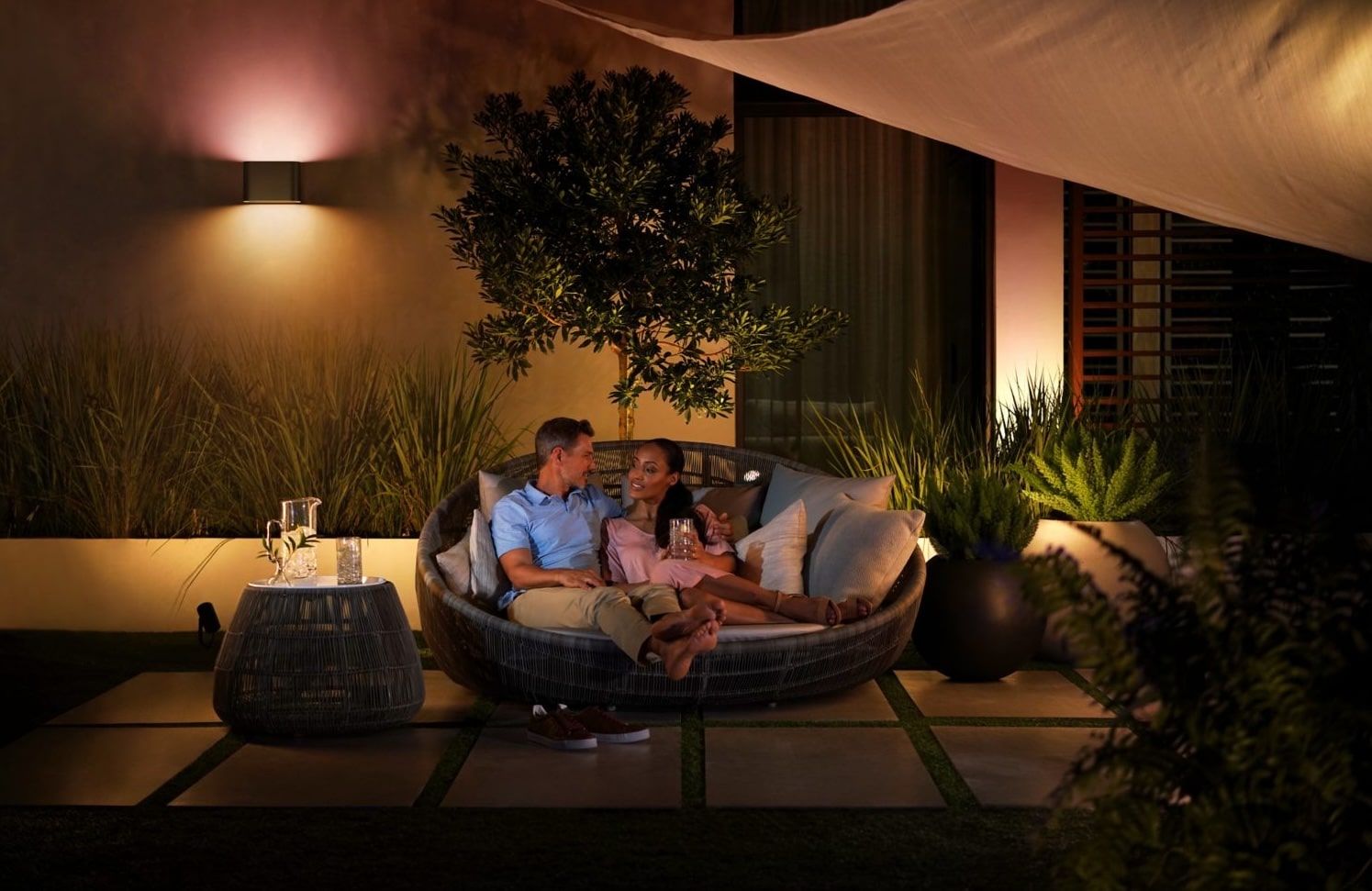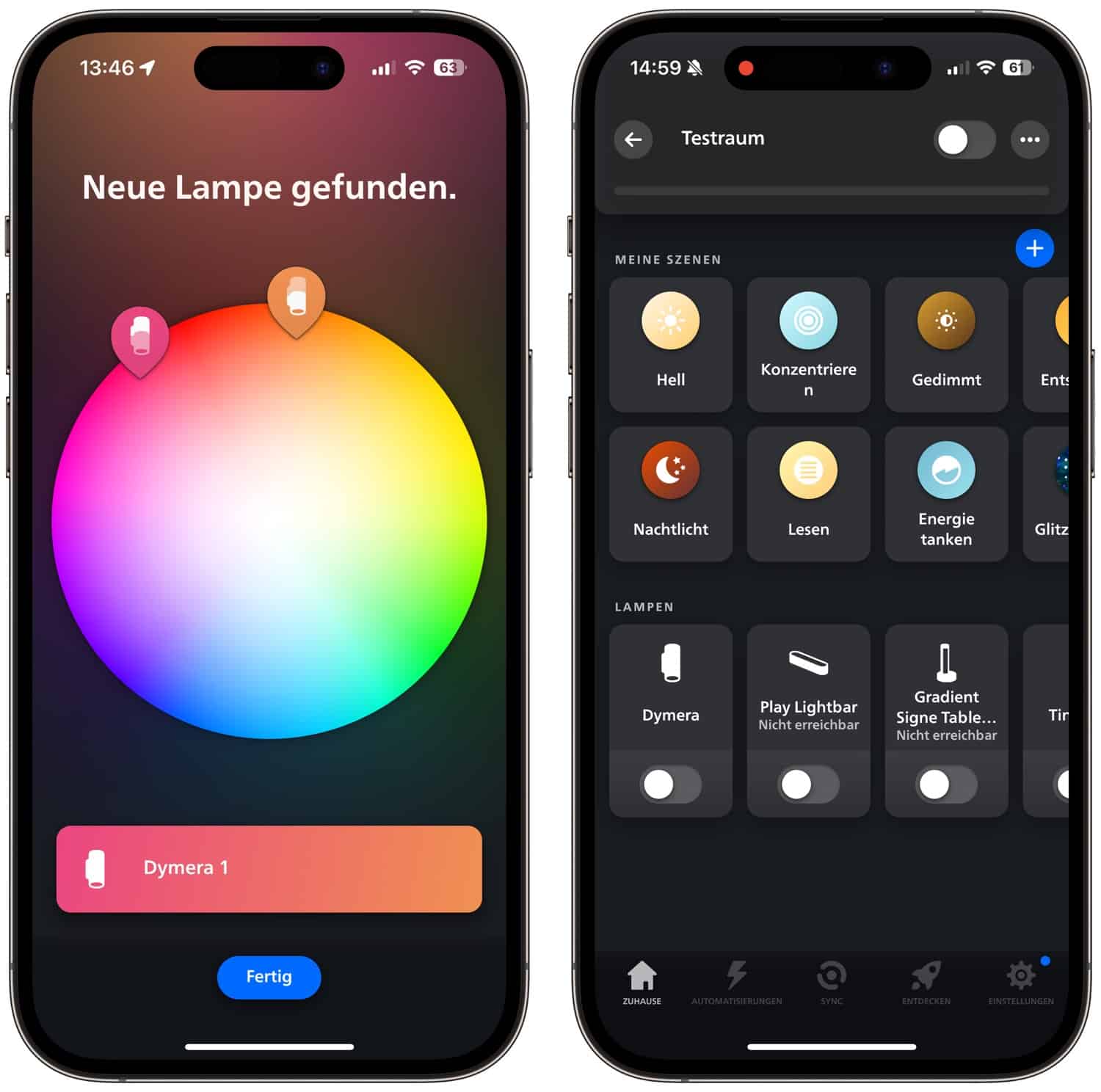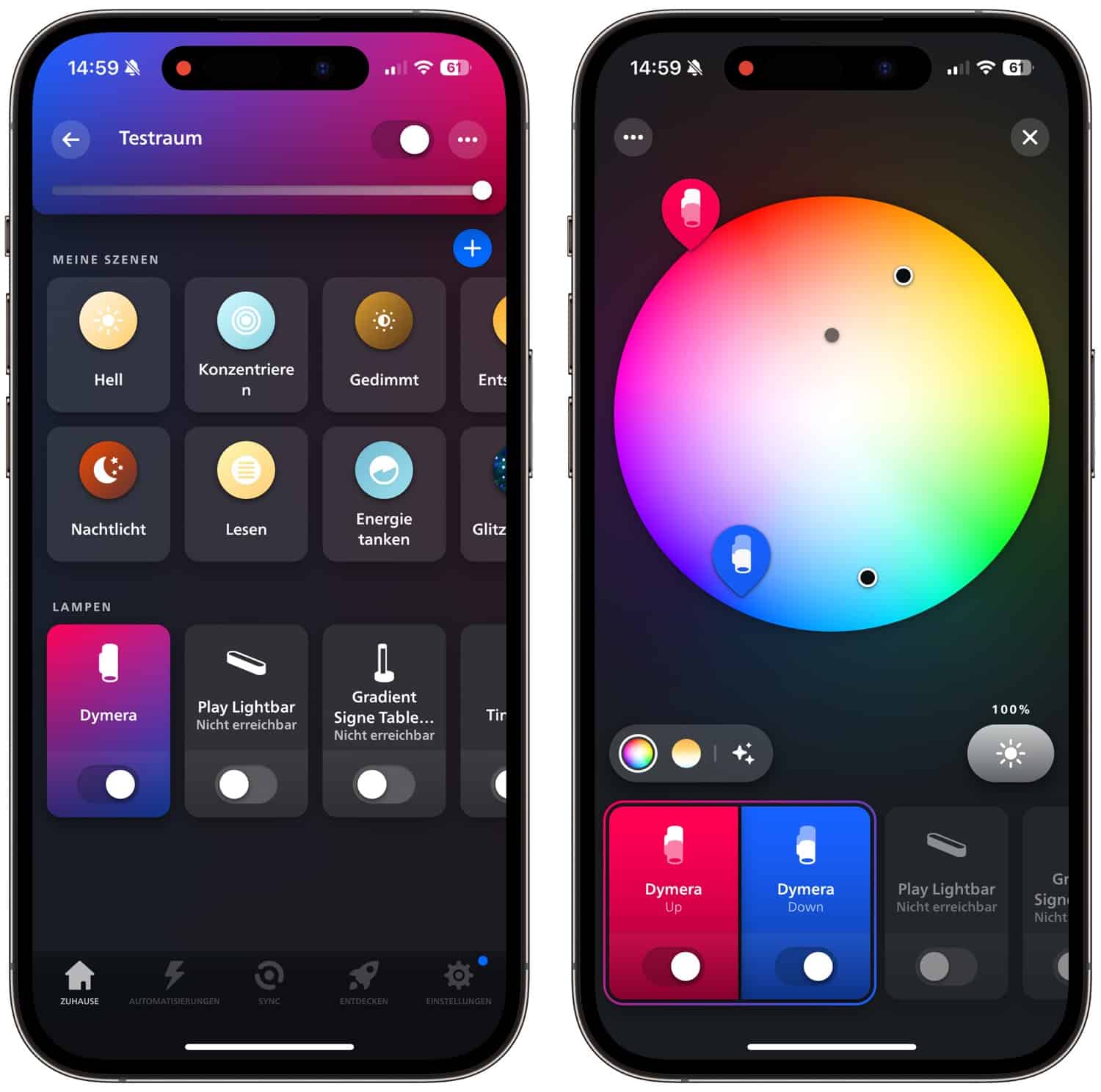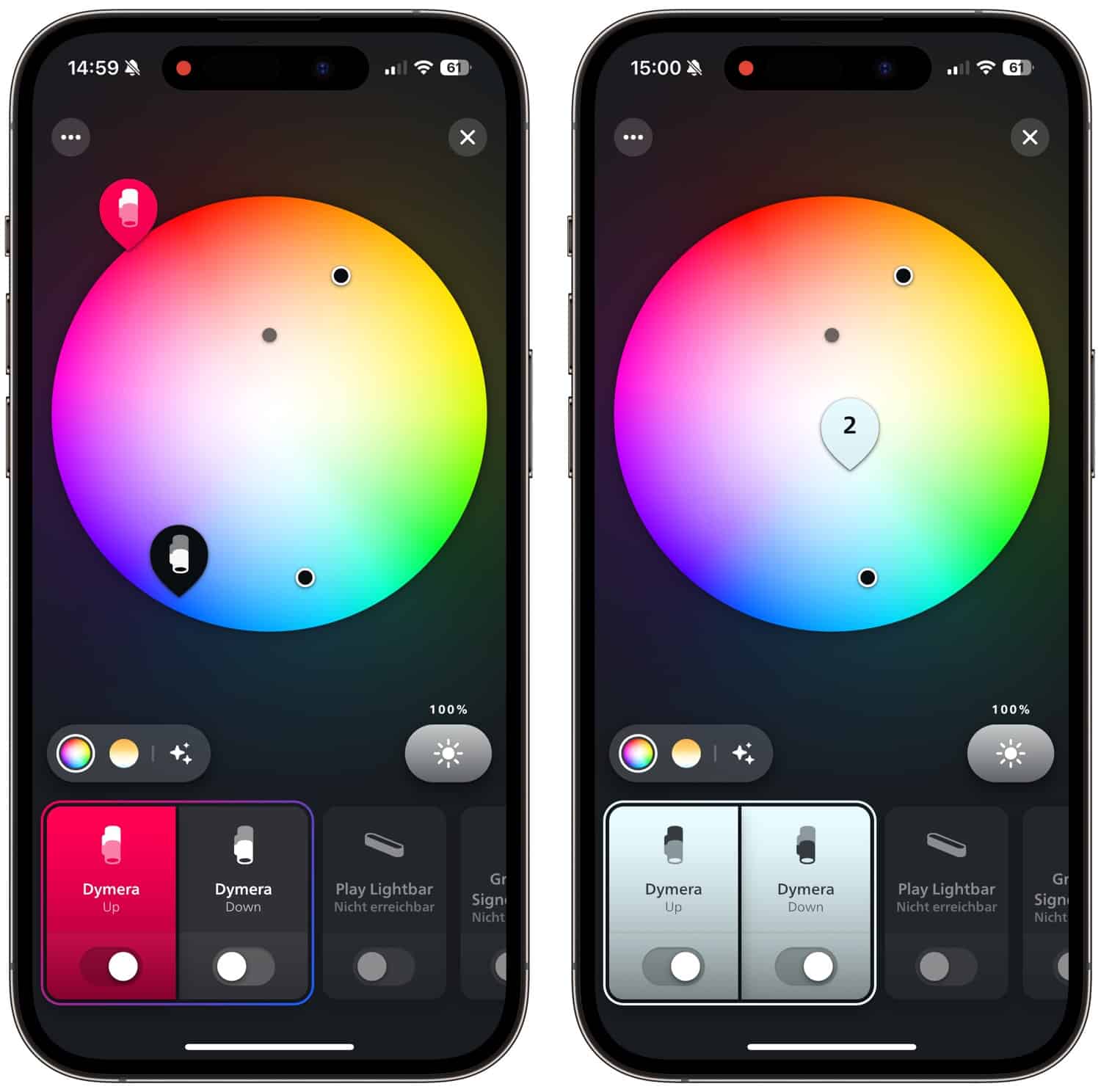In February, Philips Hue is launching the Hue Dymera, a new wall light that is suitable for indoor and outdoor use. It will cost €219.99 and is therefore significantly more expensive than the Hue Appear or Hue Resonate, for example.
However, we won’t be talking about the price and other details of the Hue Dymera today. Instead, we want to take a closer look at the new Multi-Source Light technology, which is being used for the first time in this wall light. It combines two light sources as one lamp – and this has been implemented quite interestingly in the Hue app.
You can take a quick look at the new function in the following video, which is just under two minutes long. I’ll have more details with detailed explanations for you at the end.
The new multi-source-light in the Hue app
- When you pair the Dymera with your Philips Hue Bridge, only one device is found. However, this consists of two light points.
- Only one light is initially visible in the room view.
- The Hue Dymera can be easily switched on and off and dimmed using the tile in the room view. In this case, both light sources are controlled together.
- If you tap on the tile, there is a little bit of magic: the individual lamp opens and both light points become visible – both at the bottom as a tile and in the colour circle.
- This means that the two light sources of the Dymera can be controlled independently of each other; you can switch off one light completely and let the other light up.
- The two light sources can also be easily linked together in the colour wheel and moved together.
Why not a complete software solution?
The new Philips Hue Dymera uses a new Hue Connect chip, which has been installed in this form for the first time. However, this is only half the battle, as the app has also been adapted for control purposes. This is definitely a success and would also be a really great thing for other lamps with multiple light sources.
Unfortunately, however, it is not a pure software solution. A Hue Ensis, which also has two individually controllable lights at the top and bottom, still has to be controlled in the classic way. And even the simple ceiling lamp with three smart E27 bulbs does not benefit from this new function.
What do you think of the new solution? Would you like to see more lamps with multi-source light technology?
Philips Hue Dymera
$219.99 / £199.99 / €219,99
Note: This article contains affiliate links. We receive a commission for purchases via these links, which we use to finance this blog. The purchase price remains unchanged for you.


